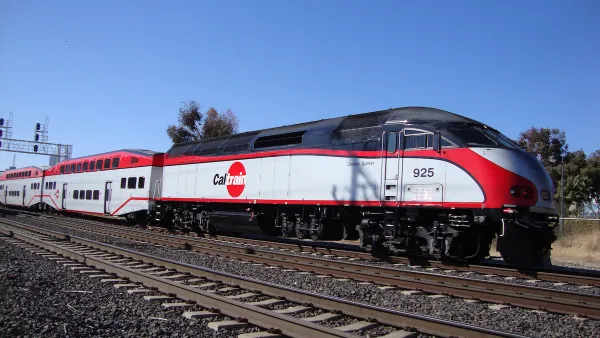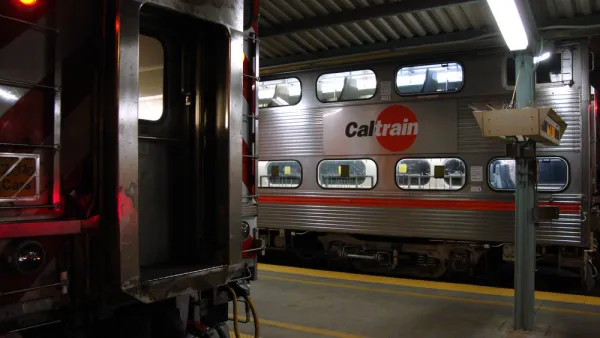Electrification of the Caltrain will be great for train riders, the environment, air quality, and public health, but it might worsen traffic congestion between San Jose and San Francisco by increasing the frequency of commuter trains.
Motorists stuck behind closed train gates may not be happy to hear that wait times may increase as a result of Caltrain electrification. It's not due to the trains themselves—as electrified trains will travel faster than diesel-powered trains due to speedier acceleration and deceleration; rather, it's that Caltrain will be running more trains, which means more "down time" for those gates.
Consequently, "seven of the 82 intersections between San Francisco and San Jose would see 'significant and unavoidable' impacts, according to a final environmental impact report prepared for the project," writes Jason Green of the Bay Area News Group.
The Peninsula Corridor Electrification Project is part of a $1.5 billion Caltrain Modernization Program that includes positive train control. "It will enable Caltrain to boost its ridership from roughly 60,000 today to more than 110,000 by 2040, according to the agency's projections," writes Green.
The only additional benefit to the program listed by Green is that it "is also expected to 176,000 metric tons of carbon dioxide from the atmosphere." The remainder of the article is devoted to increased congestion at particular grade crossings in Palo Alto, Mountain View, Sunnyvale and Burlingame.
The increased congestion is listed in the newly released Final Environmental Impact Report (FEIR) for the project, a requirement of the California Environmental Quality Act, or CEQA.
One solution is to build grade separations, but "Caltrain said the price tag was too high," writes Green. "Constructing grade separations at each of the seven intersections would cost between $350 million and $700 million."
"While grade separations are a technically feasible way to reduce traffic impacts at the at-grade locations, it is a highly expensive mitigation strategy," the report said. "Thus, Caltrain cannot commit to a comprehensive program of grade separations at this time to address all significantly affected intersections and this impact is considered significant and unavoidable.
Hat tip to MTC-ABAG Library.
FULL STORY: Report: Caltrain electrification to cause 'significant and unavoidable' impacts at certain intersections

National Parks Layoffs Will Cause Communities to Lose Billions
Thousands of essential park workers were laid off this week, just before the busy spring break season.

Retro-silient?: America’s First “Eco-burb,” The Woodlands Turns 50
A master-planned community north of Houston offers lessons on green infrastructure and resilient design, but falls short of its founder’s lofty affordability and walkability goals.

Delivering for America Plan Will Downgrade Mail Service in at Least 49.5 Percent of Zip Codes
Republican and Democrat lawmakers criticize the plan for its disproportionate negative impact on rural communities.

Test News Post 1
This is a summary

Test News Headline 46
Test for the image on the front page.

Balancing Bombs and Butterflies: How the National Guard Protects a Rare Species
The National Guard at Fort Indiantown Gap uses GIS technology and land management strategies to balance military training with conservation efforts, ensuring the survival of the rare eastern regal fritillary butterfly.
Urban Design for Planners 1: Software Tools
This six-course series explores essential urban design concepts using open source software and equips planners with the tools they need to participate fully in the urban design process.
Planning for Universal Design
Learn the tools for implementing Universal Design in planning regulations.
EMC Planning Group, Inc.
Planetizen
Planetizen
Mpact (formerly Rail~Volution)
Great Falls Development Authority, Inc.
HUDs Office of Policy Development and Research
NYU Wagner Graduate School of Public Service




























